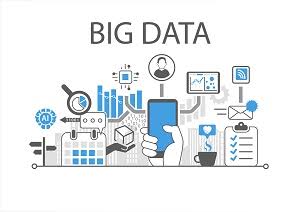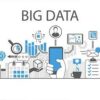There is nothing new about the increasing volume of data. The concern was there a decade ago and it will continue to set the narrative of our technology solutions ahead. After all, big data was meant to handle this explosion of data from devices, systems, and humans. So when IDC predicted the global Datasphere (digital data) to touch 175 zettabytes by 2025, the industry braced up to capitalize on the most important commodity in the world. No matter we have the vision and the technology to handle it but we lack the mindset to prepare the pipelines for the next decade.
In this article, we handpick key challenges in big data management and the most appropriate solutions to address them.
Large Tables & Complexity of Their Joins
So far, database management systems collect and store data based on the type such as customer data, device data, address data, financial data, etc. Now, this approach produces large tables that are hard to query using complicated joins every time an access request is made. Moreover, systems still using batch processing often face long data responses in event of real-time analytics.
These issues can be resolved by tweaking the approach to data storage types. K2View’s data fabric achieves ‘here & now’ results by storing data based on business logic and not the category type. A schema known as the digital entity represents every business object such as the business partner, merchant, location, credit card, etc.
This schema aggregates data fields from all underlying systems associated with a particular entity.
It helps in building a business-oriented structure consisting of tables from more number systems. As far as customizing the schema for a particular digital entity is concerned, their fabric handles that automatically from a graphical studio.
Every time the data is accessed in the fabric, the embedded ETL processes, and stores the data in an exclusive micro-DB. Every digital entity instance is stored in a compressed and encrypted micro-DB. Perhaps, this is one of the most successful implementations of micro-DB in data management that assures enhanced security, faster fetching, and incredible performance.
Inadequate Infrastructure for Storing Increasing Data
With the increasing number of internet users, the massive improvements in bandwidths (5G is here), or the devices communicating as naturally as humans, more data does not scare any more do.
This data storm requires a scalable database that provides 99.9% uptime. Until now, big data was stored in open-source systems such as Hadoop & NoSQL. However, these ecosystems may not be sufficient to provide agility and ease of use at the same time.
Storing big data in the cloud (also known as BDaaS or big-data-as-a-service) efficiently addresses the challenge of volume. It provides the needed elasticity to accommodate ever-increasing sets. It reduces the complexity and cost of management by significant margins. There is no doubt that cloud adoption has gone mainstream and that most businesses are attached to it in some capacity.
What is interesting is their application in building data lakes and executing data preparation mechanisms along with the on-premise systems. That is the hybrid landscape shaping the future. A data lake running in the cloud can still embrace traditional analytics and ML in the same system. We discuss that in the next section.
BDaaS is a huge market pacing to reach USD 42.7 billion by 2024. Among key players, including AWS, Microsoft Azure, Google Cloud, IBM, and others.
Stuck in Traditional Warehousing
It sounds easy but data collection is critical even more than analyzing the finalized sets. It is not incorrect to say that collection is the foundation of all subsequent steps in preparation such as filtering, archiving, and analyzing. So the performance of data collection logic reflects in all the phases afterward. All the data sources have to be updated frequently to ensure data integrity throughout the landscape. At the same time, maintaining access to all the sources for on-demand integration as per different business logic is equally critical.
While some organizations use a data lake as a repository to store big data sets from multiple sources, integrating these disparate sets is still a challenge. For optimal returns, the organizations need to strategize their lake’s formation and operation.
A Lakehouse approach, for example, resolves the complexity by bringing together traditional warehousing and lakes. It uses the data structure and management features of the warehouses for the lakes. Besides more cost-effective storage, the collective features include:
- On-demand, faster and direct access to all the source points.
- Supports semi-structured data types such as IoT data.
- Schema support for data governance implementation.
- Synchronous data reading and writing.
Furthermore, it actualizes an impressive range of inter-discipline analytics and ML initiatives to improvise business decision-making. As a result, data analysts, scientists, and engineers can collaboratively produce an automated, accurate, and intelligent system that unlocks massive value for the business.
It’s a Universe
Big data is getting bigger and so should our infrastructures to handle it. In the past decade, it has grown faster than our forecasting. As a result, the burden of providing in-the-moment insights will go down the process thereby overhauling the data collection, preparation, and archiving. If you act upon it today, a long stint in the business is guaranteed.
I am an Entrepreneur who co-founded Mobodexter and Hurify groups, a technology disrupter, influencer and board member on Blockchain & Smart City projects worldwide.


























































































































































































